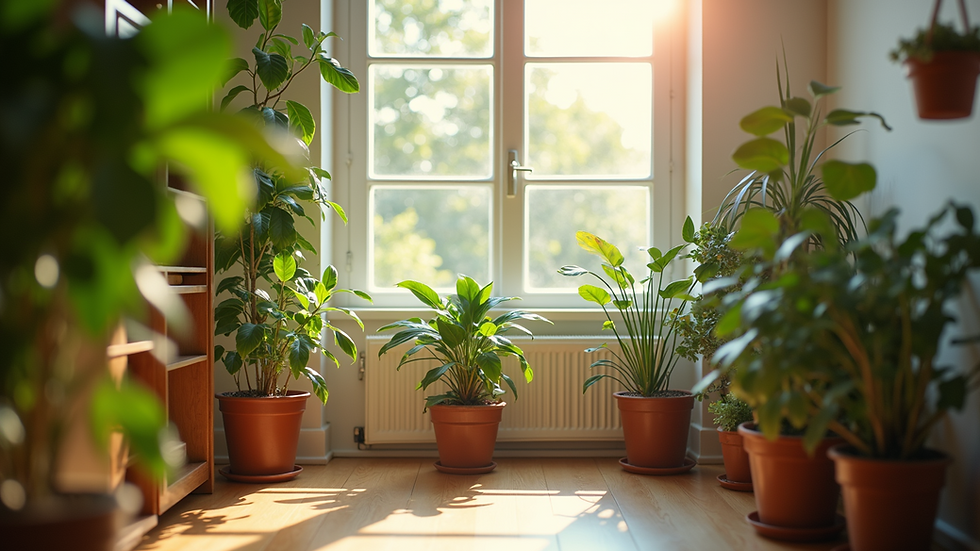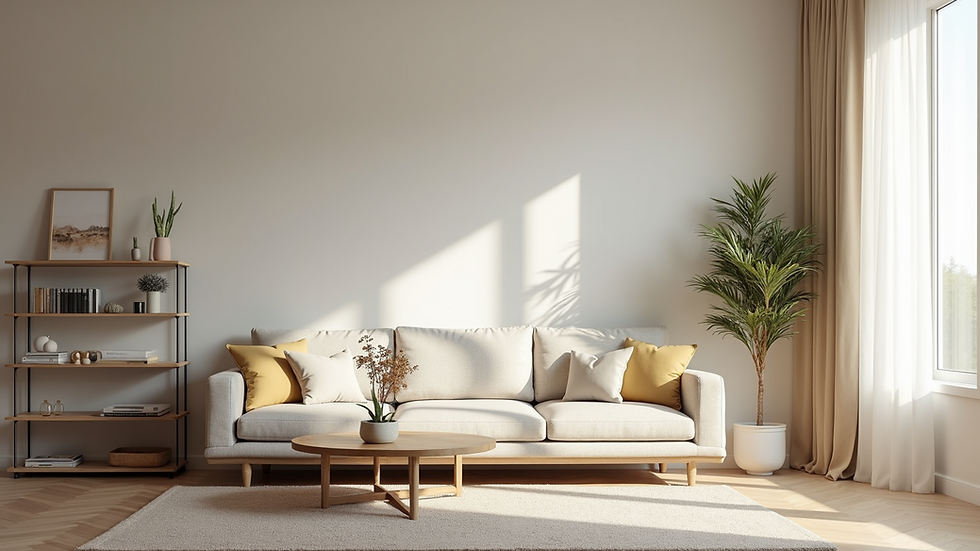Finding Your Flow: How to Create Serene Spaces in Interior Design
- Journalising Designers
- Jul 29, 2025
- 3 min read
Creating serene spaces is an art that goes beyond mere aesthetics. It’s about producing an environment where nature, structure, and personal touches converge harmoniously. In this blog post, we’ll explore what flow means in interior design and how you can create spaces that foster tranquility and ease in your home or workspace.
Understanding Flow in Interior Design
When we talk about "flow" in interior design, we're referring to the visual and spatial continuity that makes a space inviting and comfortable. Think about when you walk into a room: do you feel welcomed and at ease, or is there a disjointed feeling that makes you want to leave? The right flow encourages movement and interaction, creating natural pathways that guide people from one area to another.
To establish flow, consider the layout, furniture placement, and color palette in your space. Sometimes, moving a piece of furniture just a few inches can make all the difference in how a room feels.
The Importance of Natural Light
Natural light plays a pivotal role in creating serene spaces. It can enhance mood, make rooms feel larger, and highlight key design features. When designing a flowy space, prioritize windows and placement to maximize sunlight's impact.
Sheer curtains can help diffuse light gently, and mirrors can amplify brightness. Consider the time of day and the seasons when arranging your space – do certain areas receive more light at specific times? Use this knowledge when placing items that benefit from sun exposure, such as plants or art pieces.

Creating Open Pathways
An often-overlooked element of flow is the concept of movement within a space. Creating open pathways allows individuals to navigate through different areas without obstruction. This is especially important in larger rooms or open floor plans.
Eliminate clutter and ensure that furniture isn’t arranged in a way that blocks primary walking areas. Use rugs to define spaces and encourage flow while avoiding cutting off access. Remember, the goal is for movement to feel intuitive rather than forced.
Color Harmony for Serenity
Colors significantly influence feelings and emotions within a space. Soft, neutral tones generally evoke calmness and relaxation, while vibrant colors can energize and uplift. When designing for flow, select a cohesive color palette that ties varying areas together seamlessly.
Consider using shades of blues and greens, reminiscent of nature, to foster tranquility. Limit the use of contrasting colors and patterns to reserved spaces, ensuring they accentuate rather than disrupt the overall flow.

Incorporating Nature
Biophilic design—the incorporation of nature into living spaces—is increasingly popular for inducing calm and serenity. The presence of plants can contribute to a relaxed atmosphere and improve air quality.
You don’t need to turn your home into a jungle; simply adding one or two carefully placed plants can enhance flow. Position greenery near light sources and open areas where they can thrive and be appreciated. Adding elements such as natural wood or stone can also connect your interiors to the outdoors.
Furniture Selection and Arrangement
Selecting furniture is crucial to achieving a serene flow. Opt for items that combine comfort and functionality. Sofas with rounded edges, for example, can create softer lines in a room compared to sharp, angular pieces.
When arranging furniture, consider using the “focal point” method. Identify a central piece—like a fireplace or artwork—and arrange surrounding furniture to encourage conversations and engagement while keeping pathways open. It's all about creating a sense of balance and openness.
Personal Touches
Adding personal elements helps bridge the gap between design and individuality. Family photos, travel souvenirs, or handmade items can all contribute to the uniqueness of a space while maintaining flow.
To avoid clutter, curate your decor thoughtfully. Display a few key pieces rather than occupying surfaces with numerous items. This practice not only makes for a visually appealing space but also enhances the sense of calm through intentionality.
Decluttering for Better Flow
Clutter can disrupt the flow of a space and lead to feelings of chaos. Regularly decluttering your living or working area can create a serene atmosphere. Take the time to evaluate what you truly need and love in each room.
Consider the “one in, one out” rule: whenever you bring something new into your space, let go of an old item. This keeps your environment fresh and reduces stress related to over-accumulation.
Conclusion
Creating serene spaces through flow in interior design is a rewarding journey. It involves thoughtful considerations around light, color, furniture, and nature, all coming together to foster tranquility in your surroundings.
By focusing on movement, balance, and intentional design choices, you can transform any area into a harmonious retreat that reflects your personality and supports your well-being. Embrace your creative instincts, and enjoy the process of designing spaces where you can truly thrive.
Finding your flow in interior design is not just about the aesthetics; it’s about feeling at home in every space you inhabit. Happy designing!
